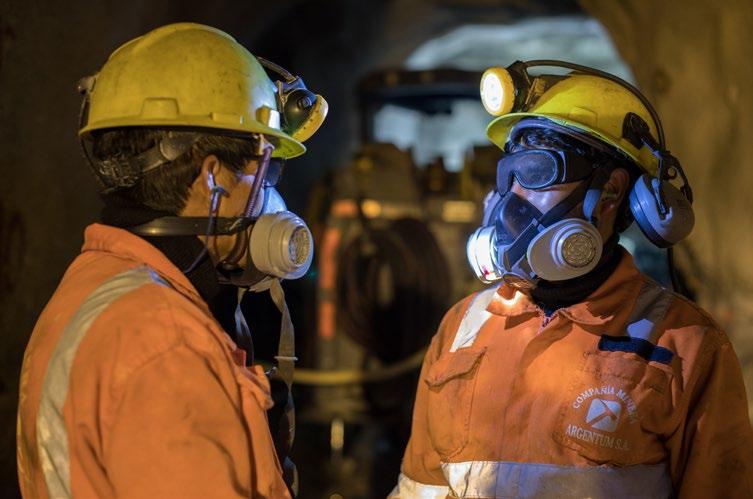
3 minute read
climate change
Climate Change and our Operations
Climate change driven by carbon emissions is an issue of global concern that will affect society, the environment, and economic development over the coming decades. We recognize that climate change is a potential threat to our business and many of our COIs, and we are committed to action to ensure an orderly transition to a prosperous low-carbon world.
In 2019 and early 2020, we conducted a study to evaluate the potential physical risks of climate change on our operations due to extreme weather events, impacts on water availability, and changes in rainfall and temperature patterns. The study considered a range of scenarios for each of our current operations, projects, and suspended operations, in line with TCFD scenario analysis recommendations. Scenarios considered in the analysis and evaluation of the latest global climate models included a 2 degree (IPCC RCP 2.6) scenario and a worst case 6 degree scenario (IPCC RCP 8.5). The evaluation concluded that none of our current assets are expected to experience climate changes effects over their current expected operating life that would be outside the existing design assumptions for storm events, temperature, and water availability. Some of our operations, however, are expected to see changes in rainfall and extreme weather events over longer periods, which needs to be considered in our mine closure and post-closure planning. We will be implementing the study recommendations by applying climate sensitivity analysis and using the best climate models available at the appropriate closure planning stage for each of our operations. We also plan to update our company-wide risk evaluation as new data and models become available and conduct a transition risk analysis according to TCFD recommendations.
We know that the effects of climate change will potentially be greater on communities around our operations whose infrastructure is often not as robust as our mines. That is why we continue to invest in initiatives from water and energy supply systems to revegetation and surface water management structures to make our host communities more resilient to climate change. We continue to invest in initiatives from water and energy supply systems to revegetation and surface water management structures to make our host communities more resilient to climate change.
Silver will play an increasingly important role in the energy transition away from fossil fuels. Silver paste is a key ingredient of photovoltaic cells used in solar panels. Transparent silver-coated windows and silver-coated polyester sheets used to retrofit windows reflect the sun’s rays and significantly reduce cooling costs and energy usage.
Silver production enables a viable solar energy industry, which contributes to avoiding a large amount of fossil fuel carbon emissions. We estimated the 2019 fossil fuel carbon emissions avoided that can be attributed to silver as a component in solar panels and found that the annual emissions avoided are greater than the total emissions generated by other end uses (jewelry, bars and coins, electronics, and brazing alloys).(1) We are working with the Silver Institute to improve general understanding of silver’s unique role in low-carbon energy solutions.
Silver is clearly a key part of the solution to climate change and reducing global carbon emissions. However, the carbon benefits generated by our product do not in any way reduce our commitment and obligation to minimize the direct and indirect carbon footprint of our activities. We will continue to build and adapt our climate strategy over time to contribute to achieving the goals of the Paris agreement, net zero emissions, and a sustainable low carbon economy.
(1) Our calculation is a comparative analysis using attributable methods based on a World Resources Institute 2019 Working Paper “Estimating and reporting the comparative emissions impacts of products”. “Silver plays a crucial role in an electrified and lowcarbon future, and the members of the Silver Institute are providing the metal needed to achieve society’s goals for renewable energy production through solar panels and other sustainable technologies.”






